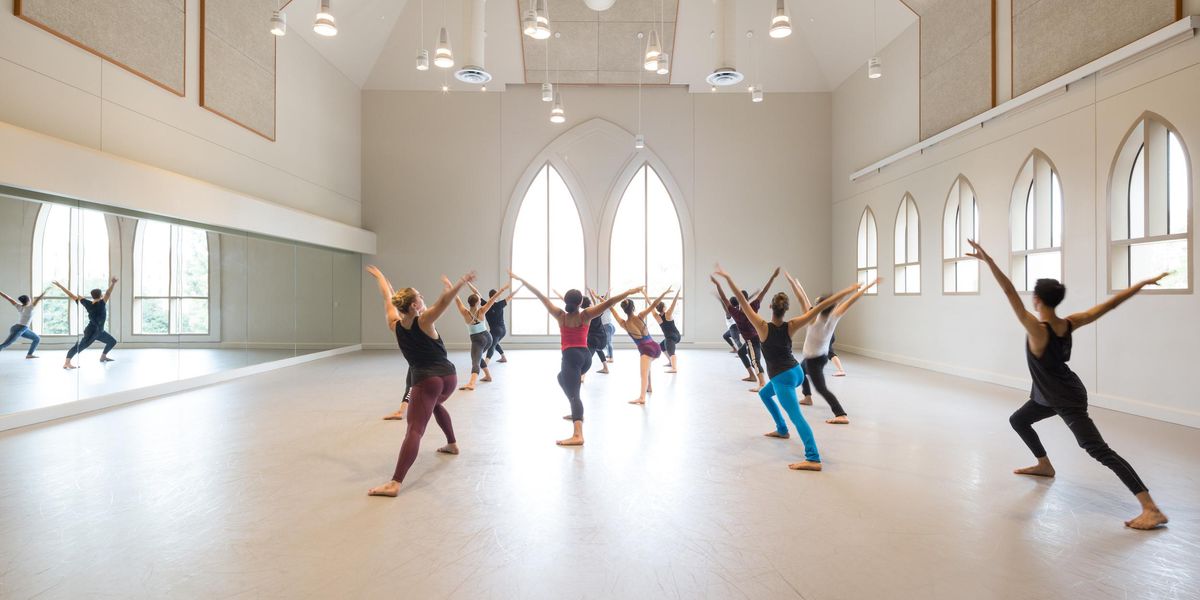Technique My Way: Christina Dooling
Resiliency, recovery, respect
Christina Dooling with Edgar Anido in
Dwight Rhoden’s
Subject to Change. Photo: Bill Hebert, Courtesy Complexions
Switching from a calm intensity to an explosive jump in a single moment, Christina Dooling knows when to unleash her power and when to slink and skate elegantly through choreography. Using her tiny frame—not quite 5′ 3″—to its full ability, the Complexions Contemporary Ballet dancer etches out shapes with confidence, helping to make her a standout in the athletic troupe for the last seven years.
At 28, she has spent years fine-tuning the regimen for what her body needs, though she’s learned through multiple injuries that the ingredients may change daily. Dance Magazine spoke with Dooling to learn how she navigates maintenance and recovery to lead a healthy dancing life.
Injury Intervention
Dooling grew up on the competition circuit, training in ballet, jazz, and tap at a studio in her hometown of Hamilton, New Jersey. But when she broke her lower right leg backstage in a freak accident at 17, she knew she had to reevaluate her approach.
In addition to working with a physical therapist, she discovered the benefits of cross-training. “Instead of using the same ballet muscles all the time, I learned that a variety of activities could help my body stay strong overall,” Dooling says. “It’s an essential tool for my best shape.” Having swum competitively from age 5 to 16, she returned to the pool for zero-impact cardio. She also added jogging: “It’s a great sense of accomplishment when you finish a run!”
A year later, Dooling returned to dance and was accepted to New York University’s Tisch School of the Arts. It was during her junior year that she met Dwight Rhoden, co-artistic director of Complexions. She started performing with the troupe while still in college, but another accident would sideline her yet again. In 2008—roughly two years after she joined Complexions—a slip and fall during a lift partially tore her ACL.
Dooling was worried about how the tear would affect her job, but she also knew that with injuries come precious opportunities to build from the ground up. “Injuries teach you how to strengthen one particular part of your body, and you come out on the other side knowing more,” she says. “Plus, you gain information about when to push, and when not to.”
She saw two physical therapists during the seven months of her recovery, and worked to rebuild strength and flexibility in the muscles around her knee. “I did a ton of squats and lunges,” she recalls. “I also did a lot of biking, which is great for your hips and butt.”
A New Challenge
During the company’s Joyce Theater season last November, Dooling experienced another setback. “I should have listened to my body more,” she says. “Even though my right leg was swollen and my hip was in pain, I was still dancing. But on the final day of performances, my leg was seriously inflamed.” A trip to the doctor let her know what was really going on: sciatica.
For Dooling, this injury was a different type of challenge. “If something hurts, my formula is usually to roll out and stretch, listening to my body in what area to attend to,” she says. “But because sciatica is a nerve issue, I was at a loss and back at square one.”
Once again, with the help of physical therapists, she’s recovering. “I’ve learned even more to give my body what it needs,” she says, “even if it’s as simple as not sitting for too long in one position.” Rolling out her glutes also helps.
Daily Awareness
Company class at the beginning of the day prepares Dooling for the technical demands of Rhoden’s choreography. In the studio, she always has a ball available for gentle massages. Exercises like the Pilates 100s throughout the day keep her core ready for work, but she makes sure to stretch out after any hip-tightening movements. Standing in parallel with her legs straight, she’ll also bend over, placing her hands beneath her feet, arching and releasing her back to stretch her lower spine.
Complexions tours often, and Dooling stays prepared with stretch bands and rollers during long tech days, making sure to tailor her pre-show warm-up to the repertoire, whether it’s pointe-heavy or more modern. She also does informal Gyrotonic warm-ups led by a fellow dancer, helping her to stay grounded.
When the company is on hiatus, Dooling digs even more into cross-training, taking ballet, Pilates, and spin classes, as well as swimming or running to maintain her stamina. But no matter what activity she’s involved in, the key to her success is respecting her instrument. “Listen to your body,” she says. “Go the extra mile to do what you need, whether it’s extra sit-ups or rolling out for five more minutes. It’s worth it!”
Lauren Kay is a dancer and writer in NYC.
PT 101
With several injuries under her belt, Christina Dooling has spent plenty of time with physical therapists. Here’s her advice:
• Work with PTs who understand dancers.
• Check references, research PT centers, and call around to find the right fit for you and your injury. A therapist should be clear about exercises, track your progress, and keep you motivated.
• Be committed and do the work outside of your appointments.
• Ask questions to fully understand your injury and recovery.
Dooling’s Dish
• Nibbling throughout the rehearsal day, Dooling enjoys dried fruits, juices, and roasted nuts. Drinking plenty of water as well as snacking on grapes or melon helps rev up her body.
• She’ll indulge in a large dinner of salmon, veggies, and rice to refuel for the next day.




